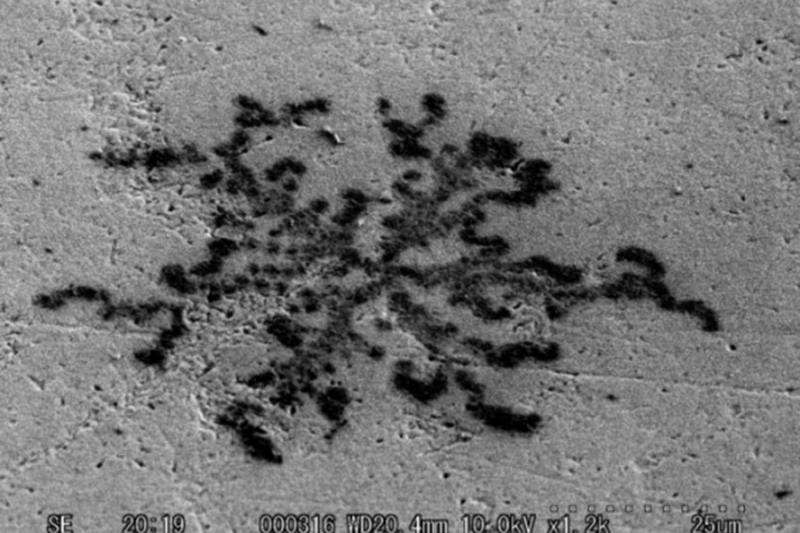New understanding of plasma arc damage in nuclear reactors

Employees of MEPhI Plasma Physics Department have made a discovery that will protect elements of thermonuclear reactors from destruction via plasma impact, and guarantee their reliable operation.
Unipolar arcs appear between plasma and the first wall in modern thermonuclear facilities. The formation of arcs leads to the destruction of reactor walls, pollution and cooling of plasma, which is unacceptable in conducting of controlled thermonuclear fusion. However, the mechanism of arc initiation has not been thoroughly studied until now.
Department of Plasma Physics employee Dmitriy Sinelnikov, while studying initiation of the arc striking, found craters on tungsten nano-undercoat from arcs, which look like snowflakes. This data will advance understanding of the mechanism of arc striking and lead to their prevention.
Tungsten nano-undercoat has been detected in experiments on helium plasma interaction with tungsten as a plasma-facing thermonuclear facility material. In such interactions, the tungsten surface is covered with a large number of hairs with a diameter of tens of nanometers and length up to a micron.
Tungsten undercoat can appear in the diverter field of international experimental thermonuclear reactor ITER; it is therefore important not only to thoroughly study tungsten nano-undercoat, but also detect problems connected with its presence in advance.
To understand the mechanism of arc striking, scientists of the Plasma Physics Department placed a sample covered with nano-underfur into a tube diode – a device that allows the creation of electric high-intensity fields between a sample and a metal anode. After a current break (rupture) occurs under some field intensity in a vacuum gap, the surface emissivity changes sharply.
The reason for this change, as the electronic microscope measurements show, is these snowflake-shaped craters. Craters of that type have not been observed on the metal surface before.
"As we can assume, the craters are traces of the arc, which appeared in a microrupture. Isolated traces are visible in the structure of the snowflake craters from cathode spots, barely distinguished on other materials," Dmitriy Sinelnikov said. "So apart from the outer beauty, snowflake craters can help better understand the mechanism of the arc movement along the surface."
Provided by National Research Nuclear University





















